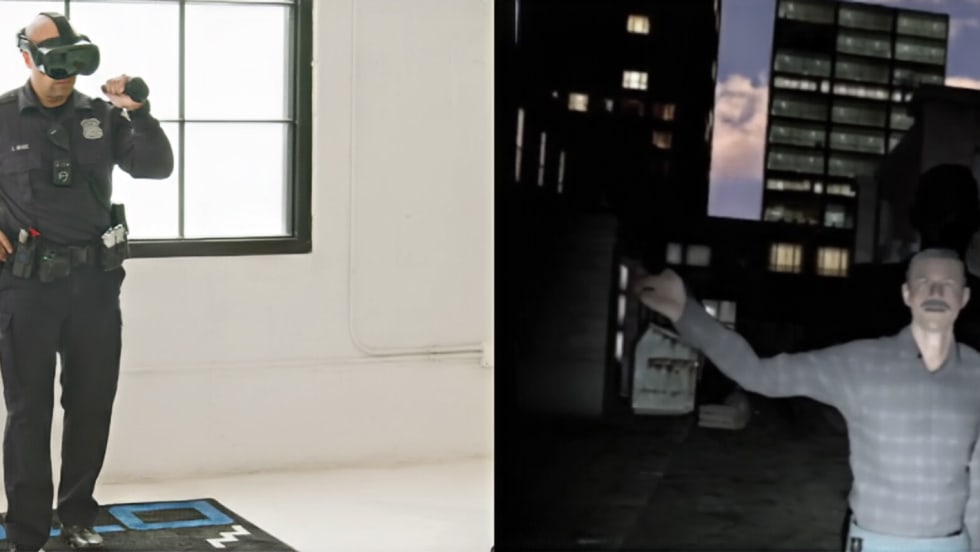Content provided by Regis University
New research shows crime often goes unreported, skewing community crime statistics.
Can a community’s safety be judged by the number of crimes that actually occur or by the crimes that are reported to police?

Photo courtesy of Regis University
Content provided by Regis University
New research shows crime often goes unreported, skewing community crime statistics.
Can a community's safety be judged by the number of crimes that actually occur or by the crimes that are reported to police? That’s the central question in a new study published by Cornell University. The study examined the discrepancies in crime statistics that significantly mislead policymakers, law enforcement personnel and citizens in their quest to make, and keep, neighborhoods safe.
The researchers studied the percentage of crimes, both minor and major, that are never reported to authorities and therefore, never considered in official crime statistics. Despite their inherent inaccuracy, these statistics are commonly used to determine everything from the number of police officers on the streets to property tax rates.
Researchers discovered two primary reasons why crimes go unreported. The first is functional—if a relatively minor crime, like a burglary, escalates into a major, violent crime like rape or murder, only the more significant crime is recorded for statistical purposes. In this hypothetical example, the murder would be reported, but not the original burglary. This phenomenon is known by prosecutors as "lesser included crimes". When researchers or policymakers examine burglary statistics in the community where the crime took place, the results would be artificially skewed to make the neighborhood seem less prone to burglary than it actually is.
The second reason for statistical discrepancies, according to the researchers, is more subjective and potentially more damaging. The researchers discovered a community's relationship with its local police officers can have a significant effect on the likelihood crimes will be reported. In a community where police officers are respected and welcomed as partners in public safety, crimes are much more likely to be reported and recorded. By contrast, in an area where a combative relationship exists between citizens and police, the community is much less likely to bring crimes to the attention of law enforcement. This makes dysfunctional communities appear safer than they actually are, because the reality of crimes committed is worse than the surface statistics indicate.
To attempt to quantify the phenomenon, researches examined burglary data throughout the state of North Carolina and compared two very different sources of criminal statistics – the FBI's Uniform Crime Reports, which compile annual crime data from police reports, and the National Crime Victimization Survey by the U.S. Bureau of Justice Statistics. In the Crime Victimization Survey, citizens are asked about their exposure to crime directly, and the survey includes data about unreported crimes.
A comparison was made between the two data sets with particular attention paid to burglaries (both reported and unreported) in North Carolina. Researchers discovered significant differences between perception and reality in several communities throughout the state. Specifically, the city of Charlotte, North Carolina, was statistically less prone to burglaries (and therefore considered "safer") than Wilmington on the North Carolina coast. When estimates of unreported crimes were considered for both cities, however, the difference in burglaries was negligible. The same analysis also dispelled the popular belief that burglary rates in cities like Raleigh and Winston-Salem had changed in recent years.
The likelihood that crime will go unreported is problematic both for criminologists and for the men, women and families who are searching for a community to call home. Encouragingly, researchers found reporting rates were rising steadily over time. According to the National Crime Victimization Surveys, burglaries were reported only 49.3% of the time in 1999. The percentage rose to 57.3% by 2009 and rose again to 58.8% in 2010. Still, that leaves more than 41% of burglaries off the official criminal record and not accounted for by researchers and residents.
Source: "Surveying Residential Burglaries: A Case Study of Local Crime Measurement"
To learn more, explore Regis University’s Master’s of Science in Criminology degree program.

Caswell Live Fire has spun off from parent company InVeris, coinciding with the 100th anniversary of Caswell’s founding. Over the past 100 years, Caswell has developed pioneering solutions that support military, law enforcement, and commercial clients worldwide.
Read More →
Thumbnail for video series POLICE Topics, Tactics & Tips with a yellow headline that reads When Do You Transport a Wounded Officer Instead of Waiting for EMS?
Read More →
In this video, hear from Dustin Mowery, a product specialist at Team Wendy, as he discusses how to best use a patrol vehicle for cover.
Read More →
While a patrol vehicle offers some cover protection when taking fire, remain mobile and don’t stick to one piece of cover indefinitely. Dustin Mowery, of Team Wendy, shares what he teaches about using vehicles as cover.
Read More →
Recruit Officer Jon-Marques Psalms, 30, reportedly suffered a medical emergency after completing a training exercise on Wednesday August 20, 2025, at the Academy.
Read More →
The webinar titled “Beyond the Plate: Real-Time Video Intelligence for Police Operations” will show how pairing LPR data with live camera feeds delivers faster, safer, and more coordinated responses on everything from stolen vehicles to active BOLOs.
Read More →
A great bicycle officer has a strong service mentality, paramount knowledge of laws, a thirst for new knowledge, and someone who can adapt to change easily. If this describes you, your agency's bicycle unit might be a good fit.
Read More →
You need to train like an elite athlete for the life-and-death challenge you may some day face on the job.
Read More →
The new artificial intelligence feature for MILO’s VR and Focus3D simulators gives trainees a chance to practice and refine their communications skills while working scenarios.
Read More →